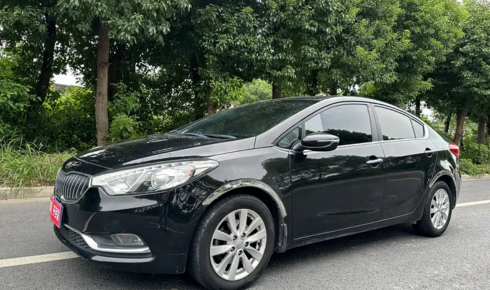In “Choosing the Right Forklift: Expert Advice from Uphire,” readers gain insights from industry leaders on selecting the ideal forklift for their specific needs. Uphire’s expertise and guidance help businesses make informed decisions to enhance efficiency and productivity in their operations.
Uphire empowers companies with tailored solutions to tackle varied operational challenges. By evaluating key factors such as load capacity, fuel efficiency, and maneuverability, Uphire assists businesses in pinpointing the most compatible forklift models. Their extensive industry expertise ensures clients navigate the complex machinery market with confidence and precision.
Understanding Your Material Handling Needs
Understanding your material handling needs is crucial for the efficiency and productivity of your operations. It involves a comprehensive assessment of your inventory, workflow, space constraints, and the types of materials being handled. By analyzing these factors, you can determine the specific requirements for your material handling equipment, such as forklifts, conveyors, pallet racks, and storage systems. For example, if you have a high volume of heavy items that need to be moved quickly across a large warehouse space, you may require heavy-duty forklifts and automated conveyor systems to streamline the process. Additionally, considering the frequency of material handling tasks, the skill level of your operators, and safety regulations are essential aspects of understanding your material handling needs.
Moreover, understanding your material handling needs also involves forecasting future growth and changes in your operations. Anticipating fluctuations in demand, new product lines, or expansion of your facilities can help you invest in scalable and adaptable material handling solutions. By aligning your equipment choices with your long-term goals, you can avoid costly replacements or upgrades down the line. Regularly reviewing and adjusting your material handling strategies based on performance data and feedback from operators can further optimize your operations and ensure that your equipment meets the evolving needs of your business. Ultimately, a deep understanding of your material handling needs is a strategic advantage that can drive efficiency, reduce costs, and enhance the overall success of your operation.
Types of Forklifts Available
There are several types of forklifts available in the market, each designed to meet specific material handling needs. Counterbalance forklifts are the most common type, featuring a weight at the rear to counterbalance the load being carried at the front. These forklifts are versatile and can be used in a wide range of indoor and outdoor applications. Reach trucks are another popular type, known for their ability to lift loads to high heights in narrow aisles. They have extendable forks that can reach into racking systems to pick up and place loads efficiently.
Telehandlers, also known as telescopic forklifts, are versatile machines that combine the functionalities of a forklift and a crane. They have a telescopic boom that can extend forward and upward, allowing them to reach heights and distances that traditional forklifts cannot. Rough terrain forklifts are designed to operate on uneven or rough surfaces, making them ideal for outdoor construction sites and agricultural settings. These forklifts typically have larger, more rugged tires and a higher ground clearance to navigate challenging terrains with ease. Each type of forklift has its own unique features and advantages, catering to different industries and applications.
Uphire Vertical Lifts offers a wide selection of machinery designed to meet diverse lifting needs. Their extensive range includes telehandlers, rough terrain forklifts, and more, suitable for challenging environments. With advanced technology and robust construction, these machines ensure efficiency and safety for construction, agriculture, and other heavy-duty applications.
Considerations for Indoor vs. Outdoor Use
When determining whether a product is better suited for indoor or outdoor use, several key considerations must be taken into account. One crucial factor is the material used in the product’s construction. For outdoor use, materials must be able to withstand harsh environmental conditions such as rain, sunlight, and extreme temperatures. Materials like stainless steel, aluminum, and treated wood are commonly used for outdoor products due to their durability and resistance to corrosion. In contrast, indoor products can often be made from a wider range of materials since they are not exposed to the same level of wear and tear from the elements.
Another important consideration is the design and functionality of the product in relation to its intended environment. For outdoor products, factors such as waterproofing, UV protection, and stability in windy conditions must be carefully considered to ensure the product can withstand outdoor elements. Indoor products, on the other hand, may prioritize aesthetics, ease of use, and compatibility with interior design schemes. Additionally, safety considerations may differ between indoor and outdoor products, with outdoor products often requiring more robust construction to prevent accidents or damage in outdoor settings. Ultimately, the decision to use a product indoors or outdoors should be based on a thorough assessment of these factors to ensure the product meets the specific requirements of its intended environment.
Weight Capacity and Load Size
Weight capacity and load size are critical considerations when selecting equipment or vehicles for transporting goods. Weight capacity refers to the maximum amount of weight that a piece of equipment or vehicle can safely handle. Exceeding the weight capacity can lead to structural damage, decreased performance, and safety hazards. Manufacturers specify weight capacities for their products based on factors such as the materials used, design specifications, and intended use. It is important for users to adhere to these weight limits to ensure the safety and longevity of the equipment.
Load size refers to the dimensions and volume of the goods being transported. Different types of equipment or vehicles are designed to accommodate specific load sizes. Overloading a vehicle with a load that is too large can result in instability, reduced maneuverability, and potential damage to both the goods and the vehicle. It is essential to consider the dimensions and weight of the load when selecting the appropriate equipment to ensure efficient and safe transportation. Properly matching the load size to the equipment’s capacity can help optimize performance and minimize risks during transportation operations.
Ergonomics and Operator Comfort
Ergonomics is a crucial aspect of designing workspaces and equipment that prioritize the comfort and well-being of operators. By understanding the physical and cognitive capabilities and limitations of individuals, ergonomic design aims to create a work environment that minimizes the risk of injury and discomfort. This involves considering factors such as proper seating height, desk layout, lighting, and equipment placement to promote good posture and reduce strain on the body. Incorporating ergonomic principles not only enhances operator comfort but also improves productivity and quality of work by reducing fatigue and promoting better focus and alertness.
Operator comfort plays a significant role in ensuring the overall efficiency and effectiveness of operations in various industries. A comfortable and ergonomic work environment can lead to a decrease in absenteeism, fewer workplace injuries, and higher job satisfaction among employees. Providing operators with tools and equipment that are designed with their comfort in mind can also contribute to increased morale and motivation, resulting in a more positive and productive work atmosphere. Investing in ergonomic solutions not only benefits the well-being of operators but also yields long-term advantages for organizations in terms of reduced healthcare costs, improved performance, and enhanced employee retention.
Fuel Options: Electric vs. Gasoline vs. Propane
When comparing fuel options for vehicles or equipment, the choice between electric, gasoline, and propane comes down to various factors such as cost, efficiency, environmental impact, and convenience. Electric vehicles (EVs) have gained popularity for their clean energy benefits, as they produce zero tailpipe emissions and contribute to lower greenhouse gas emissions overall. EVs are also more energy-efficient than gasoline-powered vehicles, converting a higher percentage of energy from the power grid to move the vehicle. While EVs may have a higher upfront cost compared to gasoline or propane vehicles, they often have lower operating costs due to cheaper electricity rates and reduced maintenance requirements. Additionally, the availability of public charging infrastructure is increasing, making it easier for EV owners to recharge their vehicles on the go.
On the other hand, gasoline-powered vehicles remain a popular choice due to their widespread availability, quick refueling times, and long driving range. Gasoline is an energy-dense fuel, providing a high amount of power per unit of volume, which is advantageous for long-distance travel or heavy-duty applications. However, gasoline combustion releases carbon dioxide and other pollutants into the atmosphere, contributing to air pollution and climate change. Propane is another alternative fuel that has gained attention for its lower emissions compared to gasoline. Propane vehicles can be refueled quickly, similar to gasoline vehicles, and offer comparable driving ranges. Propane is a byproduct of natural gas processing and petroleum refining, making it a domestically produced and readily available fuel option.
Maintenance and Service Requirements
Maintenance and service requirements play a crucial role in ensuring the longevity and optimal performance of equipment, machinery, and systems in various industries. Regular maintenance schedules are essential to prevent unexpected breakdowns, reduce downtime, and extend the lifespan of assets. It involves a series of planned activities such as inspections, lubrication, cleaning, and repairs to identify and address potential issues before they escalate into major problems. Adhering to manufacturer guidelines and recommended maintenance intervals is key to maintaining equipment reliability and safety standards. Failure to meet maintenance requirements can result in decreased efficiency, costly repairs, and even pose safety hazards to personnel.
Service requirements encompass a broader scope that includes not only routine maintenance but also specialized services such as calibration, upgrades, and overhauls. These services are often performed by trained technicians or service providers with expertise in specific equipment or systems. Routine servicing helps to optimize performance, ensure compliance with regulations, and incorporate technological advancements for enhanced functionality. Service requirements may vary depending on the complexity of the equipment, industry standards, and operational demands. Proper documentation of service history and adherence to service schedules are vital for tracking maintenance activities, warranty compliance, and budget planning for future servicing needs.
Safety Features and Compliance
Safety features are an essential aspect of any product or service to ensure the well-being of users. In industries such as automotive, aerospace, and healthcare, safety features are integrated into the design and functionality of products to minimize risks and prevent accidents. These features can include airbags, seat belts, emergency brakes, and sensors that can detect potential hazards. Compliance with safety regulations and standards is crucial to ensure that products meet the necessary requirements to protect consumers and maintain a safe environment. Companies must adhere to industry-specific guidelines and standards set by regulatory bodies to ensure the safety and reliability of their products. Regular testing, inspections, and audits are conducted to verify compliance with safety regulations and to identify any potential issues that may compromise the safety features of the product.
In addition to safety features, compliance with industry-specific regulations and standards is also important to maintain the credibility and reputation of a company. Non-compliance can result in legal consequences, fines, and damage to the brand’s image. By ensuring that safety features are integrated into the design and functionality of products and that they comply with relevant regulations, companies can build trust with consumers and demonstrate their commitment to providing safe and reliable products. Compliance with safety standards also helps companies stay competitive in the market by differentiating themselves as trustworthy and responsible brands that prioritize consumer safety. Overall, safety features and compliance are vital components in ensuring the quality, reliability, and integrity of products and services.
Rental vs. Purchase Options
When considering whether to rent or purchase a product or service, several factors must be taken into account. Rental options offer flexibility and convenience, as they allow individuals to access items without the commitment of ownership. Renting can be a cost-effective solution for short-term needs or for items that are not frequently used. Additionally, renting can provide access to higher-end or specialized equipment that may be too expensive to purchase outright. However, renting can also end up being more costly in the long run compared to purchasing, especially for items that are used frequently or over an extended period.
On the other hand, purchasing offers the advantage of long-term ownership and the potential for cost savings over time. Buying a product outright means that it can be used indefinitely without the need to return it or pay ongoing rental fees. Furthermore, owning an item allows for customization, maintenance, and the ability to resell it in the future. However, purchasing requires a larger upfront investment and may not be feasible for items that are only needed for a short period or that quickly become outdated. Ultimately, the decision between rental and purchase options depends on individual circumstances, budget constraints, and the intended usage of the product or service.
Budgeting and Cost Considerations
Budgeting and cost considerations play a crucial role in the financial planning and decision-making process of individuals, businesses, and organizations. Budgeting involves creating a detailed plan for how money will be allocated and spent over a specific period, typically a month, quarter, or year. It helps in estimating income, forecasting expenses, and setting financial goals. By carefully monitoring expenses and comparing them to the budget, individuals and businesses can identify areas where costs can be reduced or optimized to improve financial health. Effective budgeting also enables better decision-making by providing a clear roadmap for financial priorities and ensuring that resources are allocated efficiently to meet objectives.
Cost considerations are essential in every aspect of financial management, from product development and service delivery to project planning and investment decisions. Understanding the costs associated with various activities helps in determining pricing strategies, evaluating profitability, and assessing the feasibility of new initiatives. By analyzing both direct costs (such as materials and labor) and indirect costs (such as overhead expenses), organizations can make informed decisions to maximize profits and minimize waste. Cost considerations also involve identifying cost-saving opportunities, negotiating better deals with suppliers, and implementing cost-control measures to ensure financial sustainability and competitiveness in the market.




